Six years after the compromise, Budapest was established in 1873 by the unification of Óbuda, Buda and Pest on the two banks of the Danube. The settlements on the right bank downstream developed more moderately, Pest on the left bank had a really rapid development. This process began in the early 1870s, when the city was divided into only six districts: Lipótváros to the north of the inner city and Ferencváros to the south, then Terézváros and Józsefváros farther from the Danube, and Kőbánya to the farthest. Of course, they still exist today, but back then, with the exception of the inner city, they were much smaller in size and population.
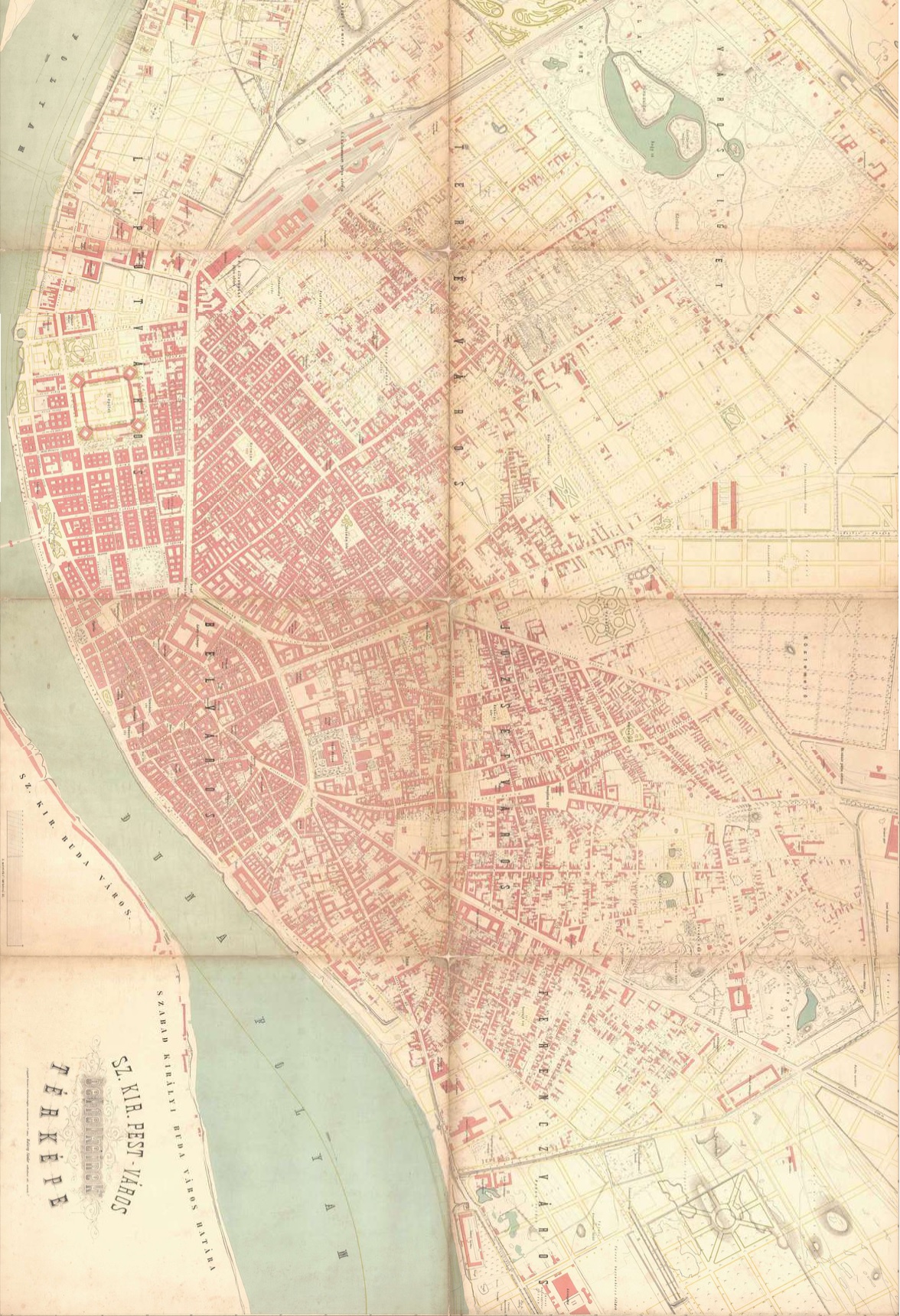
Map of the city of Pest in 1872 (source: hungaricana.hu)
One of the measures of development was the increase in the number of construction sites: in Pest, in the first year of the decade, according to statistics, builders worked in 475 places, and a year later, in 1872, 538 construction sites were registered, so the increase was considerable. However, urbanization has not been smooth. Looking at the statistical reports of 1872, it can be seen that nearly 90% of the buildings were dwelling houses. This is supported by another figure: in the reference year, the Statistical Office was aware of 6,000 more rooms than in the previous year. This is understandable, of course, as the main thing was to make sure that as many people had a place to live as possible.
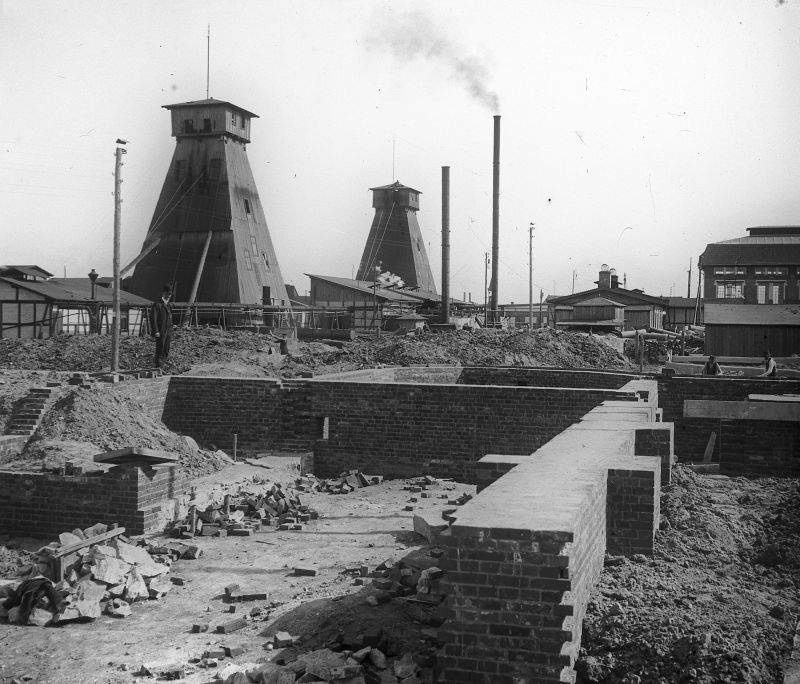
Construction in the 19th century (source: Fortepan / No. 27941)
Unfortunately, every square foot was utilized, so nearly 10% of the rooms were located in the basement. However, since 1870, a decree has stated that flats may be built only in basement rooms with at least half of their internal height above street level. In addition, even the lack of social buildings - only two healthcare buildings were handed over that year - was a major concern for quality of life.
The data also show a different increase in each part of the city: hardly any new residential houses were built in the inner districts, slightly more were built in Ferencváros, but three quarters of all construction took place in Terézváros, Józsefváros and in Kőbánya. The simple explanation for this is that free space was available there - but in the inner city more new floors were built on existing buildings.

The house at 24 Veres Pálné Street nowadays (photo: Péter Bodó / pestbuda.hu)
In the first half of the 19th century, maximum two-storey houses were built in Pest, but in the second half of the century, technology allowed them to be safely expanded upwards. In case of several classicist tenement houses it was done so, such as at 24 Veres Pálné Street, where the Faculty of Theology of the Pázmány Péter Catholic University operates today. Floors were built in 1870 on the building built in the end of the 18th century, according to the plans of Károly Hild. An even more famous example is the former Nákó Palace, whose two-storey building designed by József Hild was extended by József Pucher in 1869. However, it stands no longer, it was demolished in 1906 and given its place to Gresham Palace.
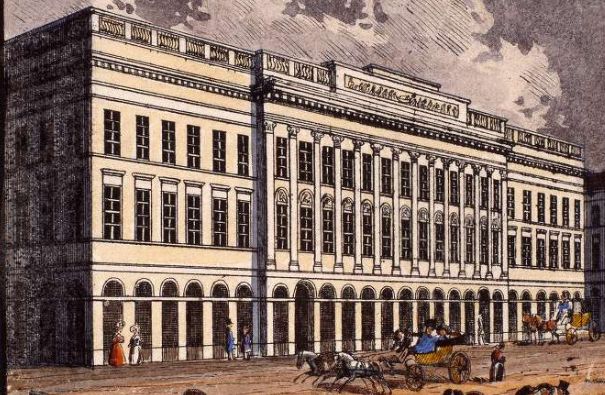 The former Nákó Palace before the reconstruction… (source: hungaricana.hu)
The former Nákó Palace before the reconstruction… (source: hungaricana.hu)
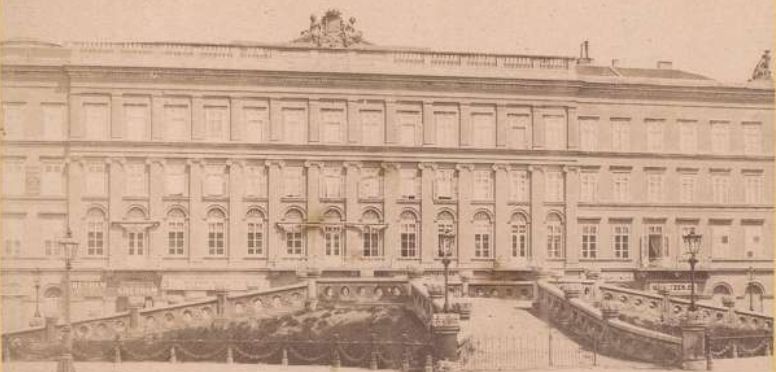
… And after the floor extension, around 1870 (source: hungaricana.hu)
The outer districts, on the other hand, were dominated by one-story buildings, and more than a quarter of the houses completed in 1872 were so. There was no shortage of space here, and they could be built faster, a tangible result was born sooner. The price, on the other hand, was that the proportion of one-storey buildings in Pest was astonishingly high by European standards: 69%, compared with, for example, 8% in Paris and 17% in Vienna.
The more floors an apartment building occupied, the fewer of it was built: of the three-storey buildings, only 262 stood in the city, and the four-storey ones were almost a curiosity, with a total of 34 of them. In one of the city's important transport hubs, Kálvin Square - which was then called Széna Square - there was one of each. The Geist House was one of the first three-storey buildings, and the tenement house of the Pest Savings Bank was one of the first four-storey buildings.
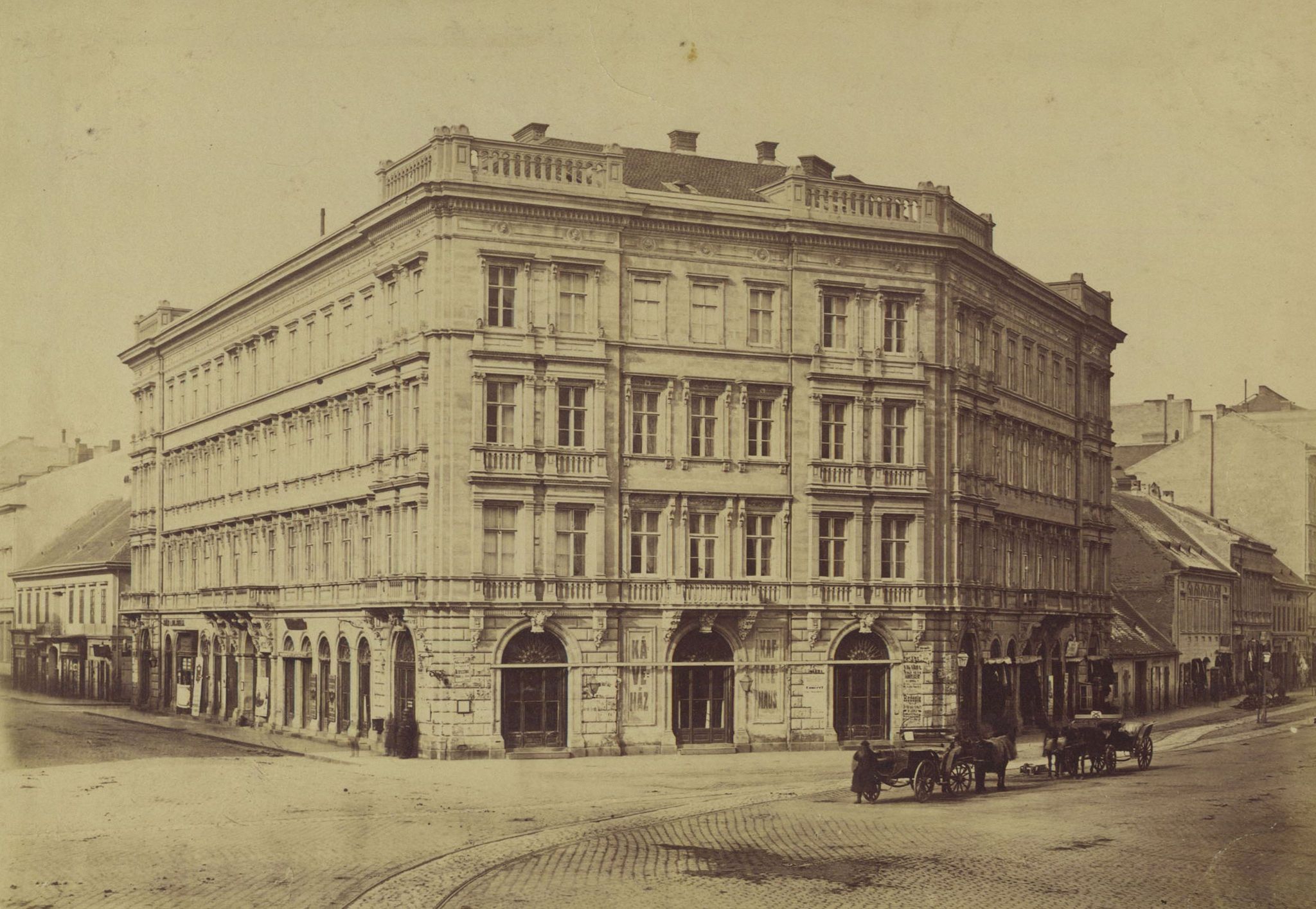
The Geist House in 1879 (source: Fortepan / No. 82069)
The names of the builders were also recorded in the statistics, including well-known individuals. In 1872, for example, the architect Ferenc Kasselik erected a three-storey tenement house in Templom square in Lipótváros (now Szent István Square), and a construction was connected to painter Miklós Barabás on Új Street (today Zichy Jenő Street) in Terézváros. A construction was finished in Tömő Street in Józsefváros by Mihály Táncsics, and in Új Vásár Square (today II. János Pál Pápa Square) by Gyula Jungfer, an artisan blacksmith, whose workshop later made - among others - the gates of the Parliament.

Portrait of Gyula Jungfer (source: Ország-Világ, 28 January 1906)
The statistics, of course, also accounted for construction costs. In the year under review, a total of just over 14 million HUF was spent on construction, of which only one million was the cost of non-residential investments. Of the remaining 13 million, most of the money went to Terézváros and Józsefváros, but since the largest number of properties were built here, a house cost only an average of forty thousand forints. The most expensive district was Lipótváros, where the total cost of a single residential building was over two hundred thousand forints. This is mainly explained by the fact that the largest tenement houses were built here, although very few of them, only 8.
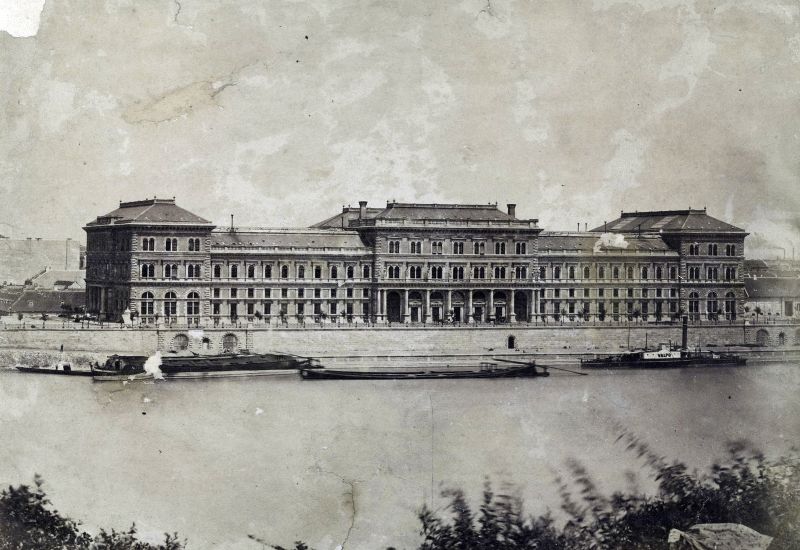
The newly completed Fővámpalota in 1874 (source: Fortepan / Budapest Archives. Reference No.: HU.BFL.XV.19.d.1.05.027)
The sudden increase in the number of construction projects also brought with it a shortage of building materials and labour. While in 1871, for example, traders still asked for only 30 forints for a thousand pieces of bricks, the following year the price was already 34 forints. In the case of wages as well, the increase was around 10%, and we can also read from the statistics which profession was the most valued: a carpenter was contracted for 2 forints, a bricklayer for 2 forints 20 pounds, a stonemason for 4 forints, and a slate roofer for up to 8 forints a day. The labour shortage was exacerbated by the fact that more and more large-scale public investments began: in 1870, for example, the construction of the Fővámház, designed by Miklós Ybl, which was done in four years, and St. Stephen's Basilica, which was built for more than half a century.
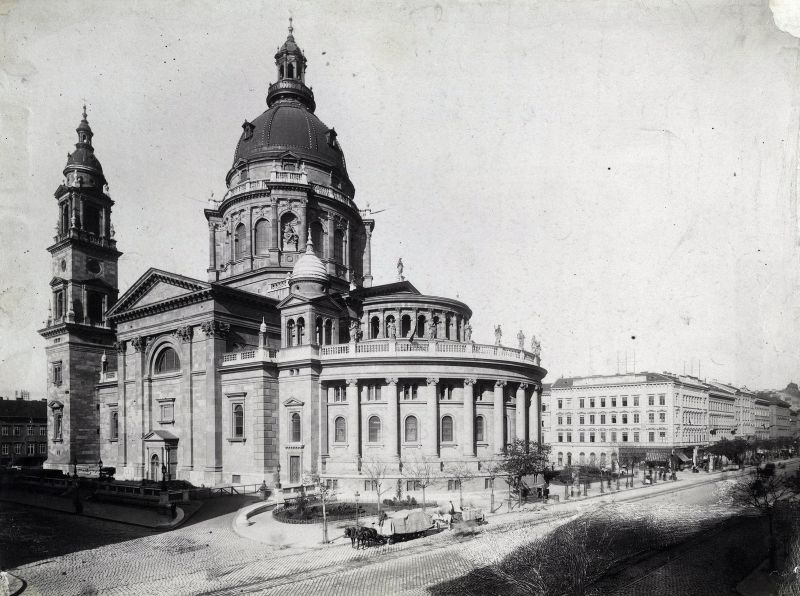
The St. Stephen's Basilica was built from 1851 until 1905 (source: Fortepan / Budapest Archives. Reference No.: HU.BFL.XV.19.d.1.08.087)
The development of the city was also manifested in the demolition of old buildings, as this freed up space for new houses. Unsurprisingly, most of the buildings have disappeared from the inner city, as it had the fewest vacant building plots available. The vast majority of the demolished houses were single-storey, a smaller part were two-storey. The other extreme in this respect was Kőbánya, where no houses were demolished in 1872. At that time, the district was still a suburb, but due to its rapid expansion, the borders of the capital shifted far beyond in a few decades. According to our current concepts, Greater Budapest was established in 1950, but efforts to this end have already been made earlier, which was actually based on the development that began at the beginning of dualism.
Cover photo: The lower embankment of Pest around 1880 (source: Fortepan / No. 82276)

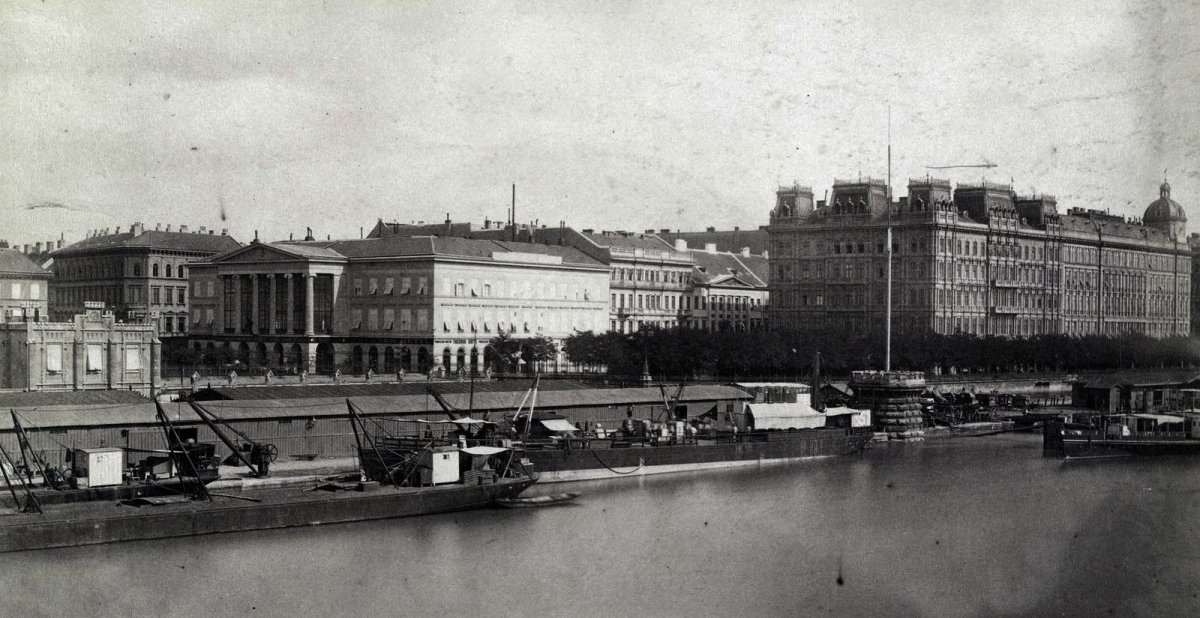


































Hozzászólások
Log in or register to comment!
Login Registration